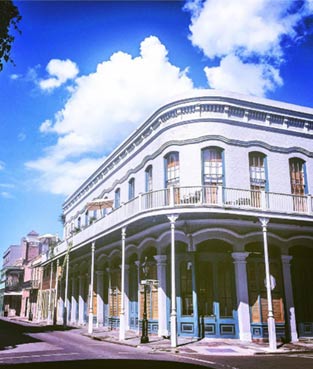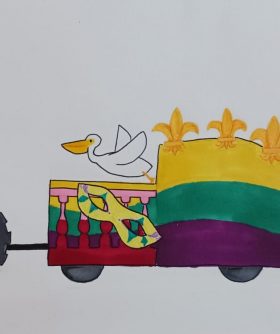New Orleans East
New Orleans East, a portion of the Ninth Ward of New Orleans, is undoubtedly the largest section of the city of New Orleans. The area covers land east of the Industrial Canal and north of the Mississippi River. Locals usually refer to this entire area as "New Orleans East," although some use this term to refer to a smaller section of the map.
There was little development of this land until the late 19th century. Before this time, only two areas were built out: the higher strip of ground along Gentilly Road (along the old bayou's natural levee), and "camps" of houses raised on stilts, developed in clusters along the edge of Lake Ponchartrain. Much development began after the Industrial Canal was completed in 1920 and post-WWII, by those who preferred a more suburban lifestyle.
The urbanized areas immediately east of the Industrial Canal largely date to the 1960s and '70s, and include such neighborhoods as Lake Willow, Spring Lake, Kenilworth, Seabrook, Melia, Pines Village, Lake Forest East, Lake Forest West, Edgelake, Plum Orchard, Bonita Park, Donna Villa, Willowbrook, Cerise-Evangeline Oaks and Castle Manor.
Originally named Lake Forest as development first centered along the easternmost segment of Lake Forest Boulevard, the Read Blvd East area began growing in the 1970s and continues to develop. It includes the more upper-middle-class and affluent subdivisions of New Orleans East, such as Lake Forest Estates, Eastover, McKendall Estates, Lake Carmel, Fairway Estates, Lake Bullard, Lake Barrington, and McKendall Place. Eastover is a gated community containing palatial homes and a Joe Lee-designed golf course. By the late 1990s, the neighborhoods of Read Blvd East were no longer majority European-American, but were particularly favored as the preferred place of residence for New Orleans' white-collar professionals and entrepreneurs.
The far eastern portion of Eastern New Orleans has little urban development, although it still lies within the city limits of New Orleans. It includes the Bayou Sauvage National Wildlife Refuge, Chef Menteur Pass, Fort Macomb, historic Fort Pike on the Rigolets, and scattered areas of essentially rural character, like Venetian Isles, Irish Bayou and Lake Saint Catherine.
Village de l'Est is known for its Vietnamese community. The Vietnamese community is also known as Versailles, as its earliest migrants, who arrived in the years after 1975, settled first in the Versailles Arms apartment complex. The commercial hub for this community extends along Alcee Fortier Boulevard, within Village de l'Est. This area of New Orleans East is also home to the locally popular Vietnamese Farmers' Market.
Today, after Katrina, the area suffered from businesses leaving and urban decay. Katrina's flooding affected almost the entire area and many stores decided not to return, although some are gradually returning as the area recovers. More info.



